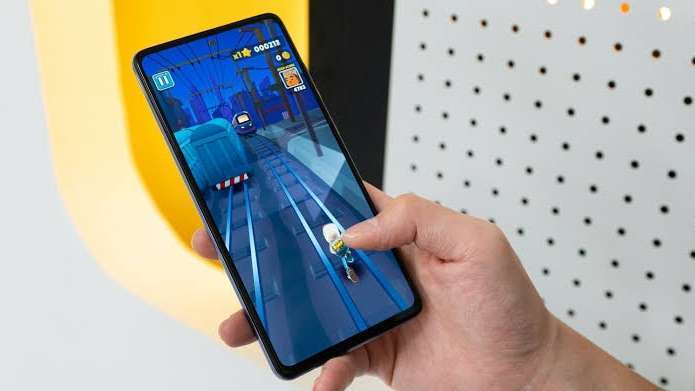
Most android phones work well when used perfectly, but haven't said that it's not going to work in every condition, as we download many other third-party applications for work, gaming and many more, it'll make your phone pile up unwanted junk files, caches, and slow down the operating system of your android phones. Nowadays, many android smartphones do have inbuilt device health care services, so that you can know about your android phone's condition well.
Don't feel short-handed, just get into this article "How to speed up the android phone" and get your phone super boosted.
Table of Contents
8 Effective Ways to Speed up your Android Phone
Execute the below listed ways to keep your android device health super good, for uninterrupted usage!
1. Free up Storage Space
Using up storage space to its full, will leave a negative impact on your phone, and it will no longer cache things, thus it'll affect the main performance of your android phone's speed.
Go to settings and you'll find the device care option, where you'll find how much space you've used, and it'll help you to clear the storage space, by analysing what makes the maximum storage.
2. Uninstall Less Used or Unused Apps
Unused applications or less used applications consume storage space and may slow down your android phone. If they operate in the background this will clog RAM. The only way to solve this problem is to get the old applications removed from your phone to enhance system performance and battery life.
Apps may be removed in a variety of ways, but the most common method is to long-press the icon and choose to uninstall or drag the icon to the uninstall window.
3. Restart your Phone Often
Whether it is a smartphone or else a computer, restarting the device is the best option you're provided with, when you encounter troubleshooting. There are few companies that provide their devices with a scheduled restart.
It is simple to see why, since rebooting or restarting your device clears out recently used applications, background processes, and other items that accumulate over time. Simply hit "Restart" while holding down the power button on your phone.
4. Factory Reset
An effective technique to boost performance is to execute a factory reset. Your smartphone is reset to factory settings, and all of your data is deleted.
Create a backup of your important data before factory resetting your Android device. Following a phone reset, go through the list of downloaded applications and install just those that you will use.
5. Always Check for Software Update on your Android Phone
Check for updates you haven't installed if your phone seems slow. Every time a new version of Android is released, Google optimises it, and most manufacturers do the same with their software skins. Therefore, updating to the most recent version of Android can assist your smartphone free up system resources, which could then contribute to quicker app loading times and greater system responsiveness.
The greatest thing is that with practically every update, the manufacturers work to increase system responsiveness and smoothness based on user input. Check your software update settings to see if any OTA software is available.
6. Use Lite Edition Apps
For outdated and low-end Android devices with less RAM and storage, Google and a few other developers provide Lite or Go variants of their apps. Many of Google's applications, including Google Go, Camera Go, Assistant Go, and Maps Go, have Lite versions available.
On the Play Store, you can also get Lite versions of other well-known applications like Twitter, Spotify, and Facebook.
7. Install a Custom ROM
Your gadget can have a second life by installing a third-party operating system or a custom ROM.
When the manufacturer of your smartphone stops providing software and feature upgrades, custom ROMs become very helpful. Since the majority of ROMs are based on stock Android, they are lighter and quicker than skins from the device's original manufacturer.
8. Change System Animation Speed
Every operating system has a huge number of animations, and Android is no different. Virtually all inputs, from starting an app to displaying a notice, are animated. Your Android phone won't run quicker if you change the system animation speed, but you'll get the impression that it is.
You must first enable Developer Settings to modify the speed of animation on your smartphone. Look for the Build number entry under Settings > About Phone or Device. You are now a developer when you tap it seven times or until a notice stating as such appears.
Final Note
There are many ways to maintain your android phone's speed in a good condition, but it truly relies on us how much care is done. So, speed up your android phone with the above-discussed methods, so that you'll never feel that your phone is outdated.
Still, have any queries? Please drop them in the comment section below and we'll be after them soon. For more technical information do follow us for more updates!
Frequently Asked Questions concerning Speeding Up the Android Phones
A few queries are listed below;
1. Why is my android phone slow?
The speed of an Android smartphone is affected by several factors that alter how it works and functions normally. If you think your phone is sluggish, freezes, or you're unsure why it's acting this way, know that frequent usage may wear out a gadget and cause it to slow down.
2. Is it okay to clear cache memory from an android phone?
Yes, it is fine to clear cache memory or data for apps on android by clearing the system cache in your android setting. Getting it deleted doesn't adversely affect the functionality of the particular application. In fact, it helps the device to help troubleshoot android issues.



Leave a Reply